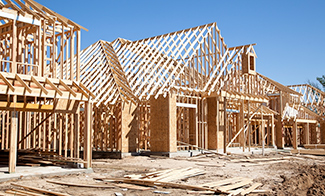Overcoming the Skilled Labor Shortage in Construction
Overcoming the Skilled Labor Shortage in Construction
As the construction industry ramps up following the pandemic, it’s clear that labor shortages aren’t a temporary phenomenon. In fact, between the infection anxiety and the host of government support programs implemented during the pandemic, it’s become even harder to find qualified workers. And it could get worse.
The Long-Term Issue
The root causes of these continuing pressures are obvious: for years, the industry has been facing the challenges of an aging workforce. According to the U.S. Bureau of Labor Statistics (BLS), the median age for a construction worker is 42.9 years. Of the 10.8 million workers employed in the construction industry in 2020, the BLS found 69.1 percent were aged 35 and over, and 22.7 percent were age 55 and over. On the other hand, only 30.9 percent were under age 35, and only 9.4 percent were under 25.
These numbers lead to an obvious conclusion: construction companies and their recruiters must make construction employment more appealing to younger generations.
Going Beyond the Basics
Industry and labor groups have been addressing the aging workforce issue for some time. Efforts include programs targeted to high school students, marketing trade school and the prospect of a well-paying job as an attractive alternative to four years of college, tens of thousands of dollars in student loan debt, and a degree that may not translate into a career.
Such large-scale marketing efforts can be helpful, but ultimately it is construction companies themselves that must resolve the issue.
Good pay and benefits are essential, of course, but prudent contractors will avoid getting caught up in a bidding war with spiraling pay scales and increasingly costly benefits packages. Moreover, as important as pay and benefits are, smart recruiters recognize they are just a starting point.
A more effective approach is to offer a package that is competitive but still affordable and then to build on that foundation by adding innovative—and sometimes less tangible—features that appeal specifically to high-performing young workers.
Reaching Out to Younger Workers
Although the millennial generation (those born in the 1980s and early ’90s) still gets much of the attention, forward-looking recruiters are already tailoring their approaches to appeal to Generation Z—those born in the mid-1990s and later who are either just entering the workforce or looking for new opportunities after completing entry-level jobs.
Observers contend that Generation Z is more interested in career opportunities and the potential for personal growth than millennials are. Work-life balance is also considered a higher priority for Generation Z workers.
Such broad generalizations can be misleading, of course, but they are worth considering when developing recruiting strategies.
For example, offering cross-training opportunities to young workers is not only a potential Generation Z recruiting tool, it can also improve performance and jobsite efficiency. In the same way, leadership development and personal enrichment courses for those interested in management careers can also benefit the company. In addition, a strong commitment to worker safety is always essential.
There are other opportunities to position your firm to attract a younger workforce. Showcasing your company’s work in more technical, high-skill projects can go a long way in recruiting young, ambitious workers — especially combined with the outreach to local schools offering internship programs.
However your construction contracting business manages the short and long-term labor situation, it will be crucial to maintain flexibility and long-term profitability that makes your firm successful and attractive to workers. Contact us today to take advantage of our extensive experience in industry benchmarking, cashflow analysis, and proper tax planning.
